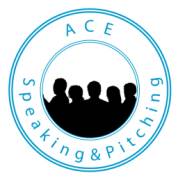Effective communication is paramount, and one of the most impactful ways to convey your message is through presentations and content. Incorporating visual aids such as slides or videos can significantly elevate your presentation, making it more engaging, informative, and memorable for your audience.
- Reflect Your Audience: Understanding your audience’s preferences, needs, and level of familiarity with the topic is crucial. Tailor your visual aids to resonate with them and cater to their learning styles. This step sets the foundation for creating visuals that will truly captivate your audience.
- Simplicity is Key: Your visual aids should complement your presentation, not overshadow it. Keep your slides and videos clean and uncluttered. Use a simple colour palette, legible fonts, and minimal text.
- Visual Consistency: Maintain a consistent visual theme throughout your presentation. Use the same fonts, colours, and design elements to create a cohesive look. This consistency fosters a sense of professionalism and coherence, helping your audience to focus on the content.
- Visual Hierarchy: Arrange your content in a logical order to guide your audience’s attention. Important points should be larger, bolder, or placed strategically on the slide. Utilise bullet points, headings, and subheadings to emphasise key takeaways.
- Use High-Quality Images: Images are a powerful tool to convey emotions and ideas quickly. Choose high-resolution images that are relevant to your content. Avoid using generic stock photos and opt for visuals that add value to your message.
- Graphs and Charts: Complex data can be difficult to grasp without visual aids. Incorporate graphs, charts, and infographics to simplify complex information. Ensure that your data is accurate, properly labelled, and easy to interpret.
- Videos: Including short videos can bring a dynamic dimension to your presentation. Videos can demonstrate processes, showcase real-world examples, or share expert interviews. Make sure the videos are relevant, concise, and enhance the points you’re making.
- Transitions and Animations: While animations can add flair, use them judiciously. Subtle transitions can help create a smooth flow between slides, while animations can highlight specific points. Overuse of transitions or animations can be distracting.
- Practice, Practice, Practice: Familiarise yourself with your visual aids to avoid any technical glitches during the presentation. Practice delivering your speech while seamlessly integrating your visuals. This practice will enhance your confidence and help you maintain a natural flow.
- Engage Your Audience: Your visual aids should facilitate interaction, not replace it. Engage with your audience through well-phrased questions, discussions, and interactive elements. Encourage participation and use visuals to support these interactions.
- Relevance is Key: Every visual aid you include should directly contribute to your message. Don’t add visuals for the sake of it; each element should serve a purpose and enhance understanding.
- Be Prepared for Contingencies: Technology can sometimes fail. Have a backup plan in case your slides or videos don’t work as intended. Be ready to proceed without your visual aids if necessary.
In conclusion, the effective use of visual aids in presentations can significantly elevate your communication skills. When harnessed properly, slides and videos can enhance understanding, engagement, and retention of your message. By understanding your audience, maintaining simplicity, and practicing thoroughly, you can seamlessly integrate visual aids into your presentation, creating a memorable experience that leaves a lasting impact on your audience.

